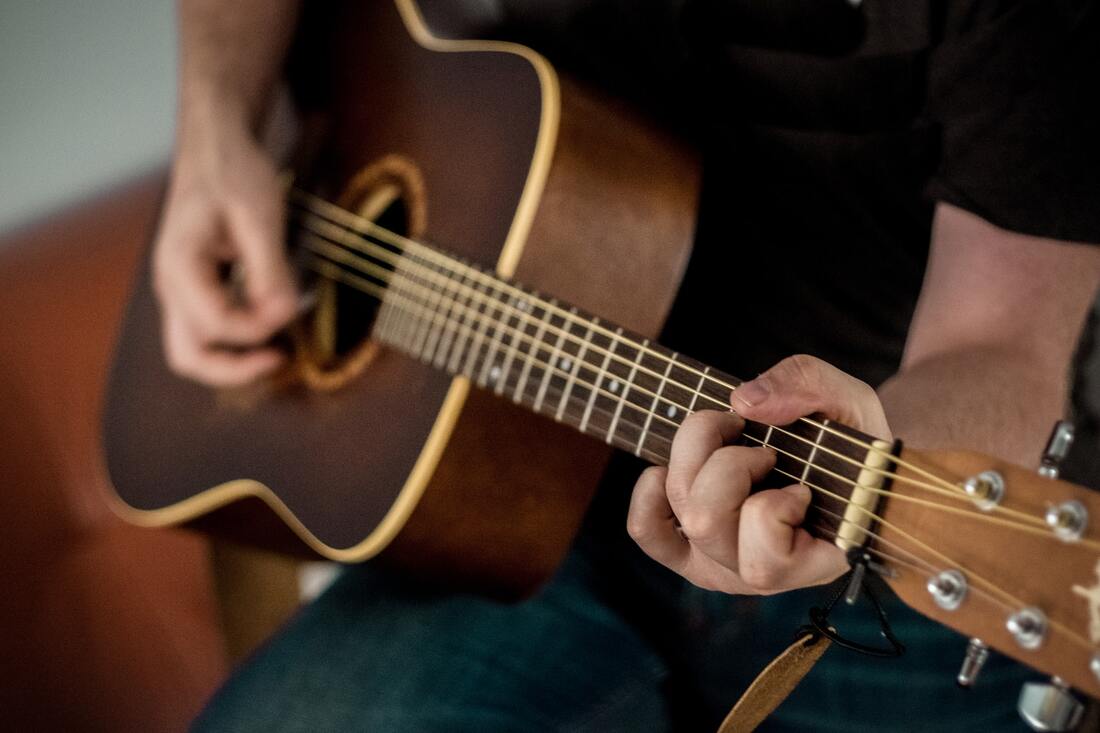First things first, you must make sure that the guitar you want to purchase is within your budget. While the mechanics of both acoustic and electric guitars are roughly the same, they come at very different price points. Generally speaking, electric guitars are more expensive than their acoustic counterparts, costing anywhere between $500-$5000. On the other hand, acoustic guitars range between $100 and $2000. It is worth mentioning that the electric variety also requires some accessories, with amplifiers and tuners being the most essential ones. Suffice to say, these accessories do not come cheap, so you might very well go above your budget. This is why we recommend that you go for an acoustic instrument if you are worried about initial and long-term costs.
Strings
One of the few differences you will notice when you hold an acoustic and an electric guitar side by side is the girth of the strings themselves. The folks at Acoustic Bridge explain that this is caused by the size difference between acoustic and electric instruments. In a nutshell, acoustic guitars depend just on their considerably large bodies and strings to amplify the sound they emit. So, naturally, their strings are thicker than electric guitars’. As a beginner, manipulating thick strings may not be easy because they are not very bendable, not to mention that the strings might also cause blisters to form on your fingers. This is not to say that playing an acoustic guitar is agonizing or anything, but it just can be a tad uncomfortable. On the contrary, electric guitars’ strings are lighter and thinner, which, in turn, makes them more forgiving on untrained fingers.
Music Genre
This might be obvious, but your favorite music genre should be the biggest factor that dictates which guitar variety to get. Whether you get an acoustic or an electric guitar, you will certainly find plenty of great songs to play, but wouldn’t it be more fun to be able to play your most beloved tracks? For instance, rock, punk, metal, and blues all favor electric instruments. On the other hand, if you are a fan of country and folk music, you will have a better time playing an acoustic guitar. Clearly, there is no wrong answer here; it is all a matter of preference.
Ease of Learning
All this talk about the thickness of acoustic guitars’ strings might have led you to believe that electric guitars are easier to get the hang of. Unfortunately, this is not really the case, considering the couple of extra knobs electric guitars come with. If you get an acoustic guitar, you can start playing right away, with or without a pick. However, electric guitars require certain accessories as we have mentioned, so you will need to adjust your amplifier and tuner first before you rock on! If you want a no-fuss experience, then certainly opt for an acoustic instrument.
How to Choose a Guitar
Once you figure out whether you want an acoustic or an electric guitar, it is time to pick a model. This is not always straightforward, given the wide array of options on the market. Nonetheless, the easiest way to get the guitar you are dreaming of is to start by deciding the look and size you want. Guitars differ greatly in shape and size; electric ones, in particular, come in a variety of colors and shapes. Aside from aesthetics, you will also need to check reviews to see what fellow musicians think of the model you have in mind. Last but not least, we recommend that you try the guitar you have your eye on before actually purchasing it, just to make sure that it feels and sounds right.











